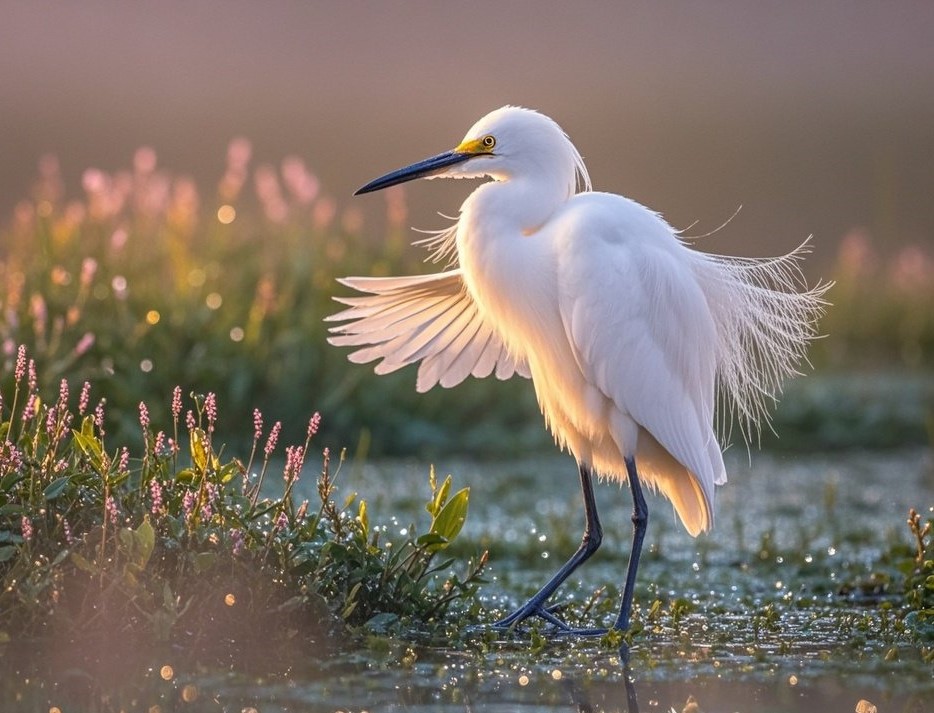The roseate spoonbill isn’t just beautiful, it carries a secret migration story few ever notice…
Roseate Spoonbill glides like a pink whisper over Sanibel’s quiet marsh. “They migrate silently, choosing solitude over spectacle,” says Audubon. “Their path follows water, not seasons.”. I first saw one vanish into fog, no sound, no flock, just grace. Why do they leave so quietly? Let’s find out.
Spoonbill Dances While Feeding
Its sweeping beak moves like water choreography and it’s no accident. In the early morning, when dew still clings to the tips of marsh grass, a spoonbill stands still. Then it begins to move, slowly, as if listening to music only it can hear. Its motion is mesmerizing, I forget the perfect moment to take a photo and end up simply watching.

Spoonbills don’t snatch prey like eagles, and they don’t dive like ducks. They feed with calm elegance sweeping shallow water with their wide, spoon-shaped bills. This movement is called side-sweeping feeding, and it looks like a slow dance across the marsh. As the spoonbill walks gently, it swings its bill left and right, filtering the water for tiny shrimp, small fish, and aquatic insects.
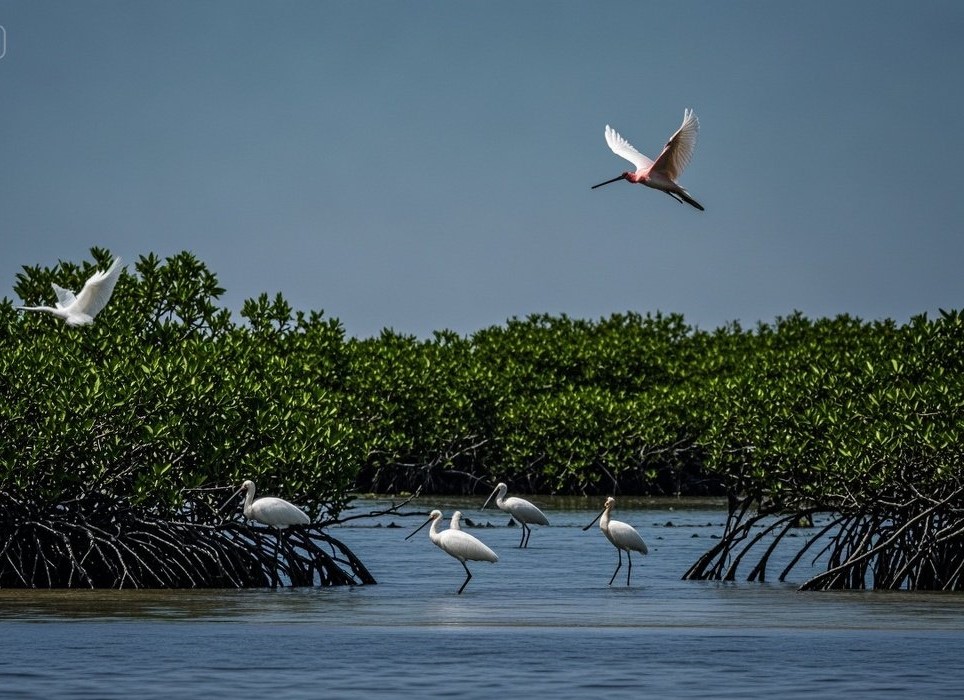
At Ding Darling Wildlife Refuge, when the sun begins to rise, the marshes of Sanibel turn into a stage. A spoonbill steps out from behind the mangroves, its feathers glowing like freshly bloomed petals. It doesn’t rush. It knows this marsh belongs to it. A pelican glides overhead, but the spoonbill stays calm, still dancing.
Mini Table: Spoonbill Color Evolution
| Bird Age | Dominant Color | Quick Note |
| Juvenile | Pale white | Hasn’t eaten carotenoid-rich shrimp |
| Teen | Soft pink | Color begins to shift |
| Adult | Bright fuchsia | Full color, ready to mate |
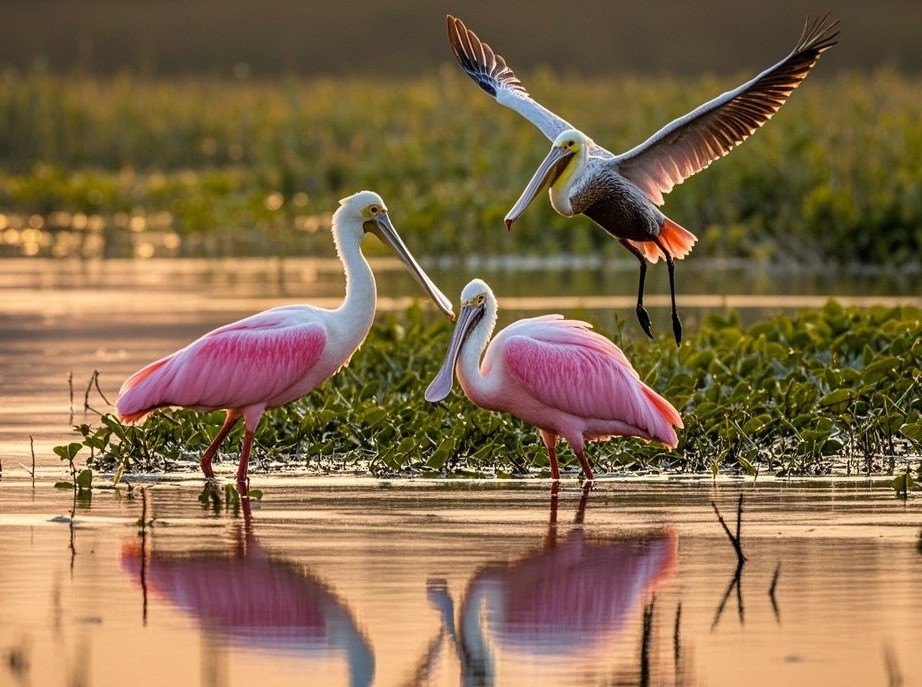
In the late afternoon, as the breeze begins to carry the salty scent of the sea, the spoonbill is still there. It stands quietly in a shallow pool, unmoving then slowly begins to sweep again. Its motion is gentle, like it’s remembering something. Maybe the season ahead. Maybe the place it’s meant to go.
The Spoonbill’s Secret Migration
They don’t like crowds, and their migration path is anything but ordinary. Spoonbills aren’t the kind of birds that fly in V-shaped formations like geese. They prefer solitude or small groups, just two to five birds at a time. Their route isn’t fixed, it depends on temperature, water levels, and food. Sometimes they move from Florida to Texas, sometimes to Mexico, and sometimes they simply wander through nearby marshes.
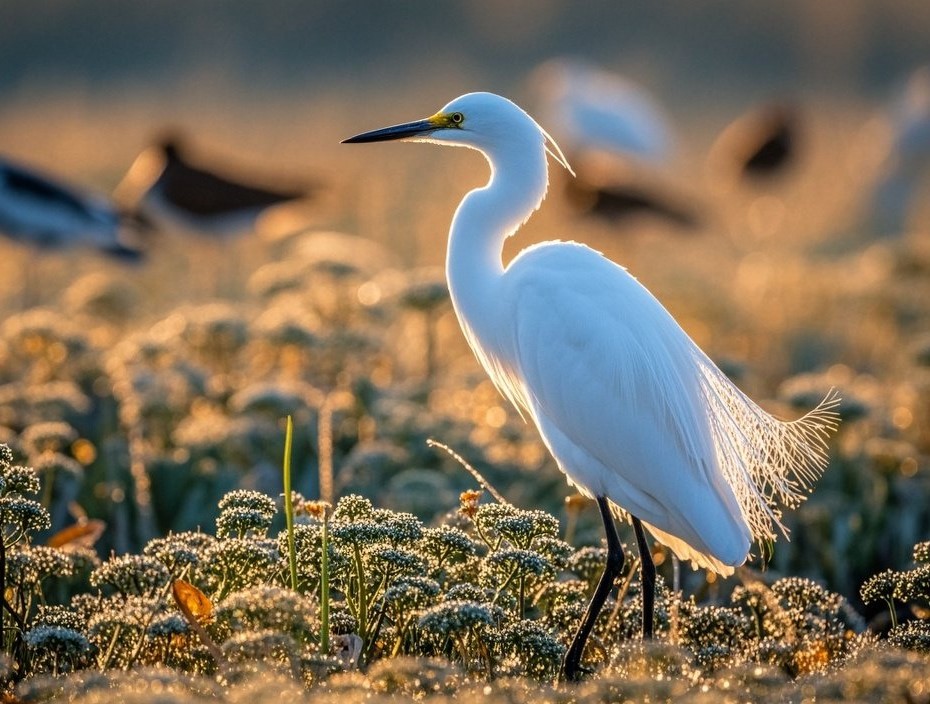
In Sanibel, as the seasons begin to shift, the spoonbill slowly disappears from the marsh. There’s no announcement, no crowd—just faint footprints left in the mud. A birdwatcher once said, “If you see a spoonbill flying at sunset, it means the season has changed.”
Overlooked but Fascinating Facts
- Spoonbills don’t always migrate every year.
- They choose their timing based on water levels and temperature—not the calendar.
- These birds can fly up to 80 km in a single day, but they often stop in quiet places.
- Spoonbills prefer peaceful marshes over large, noisy lakes.
An Unforgettable Sunset Moment
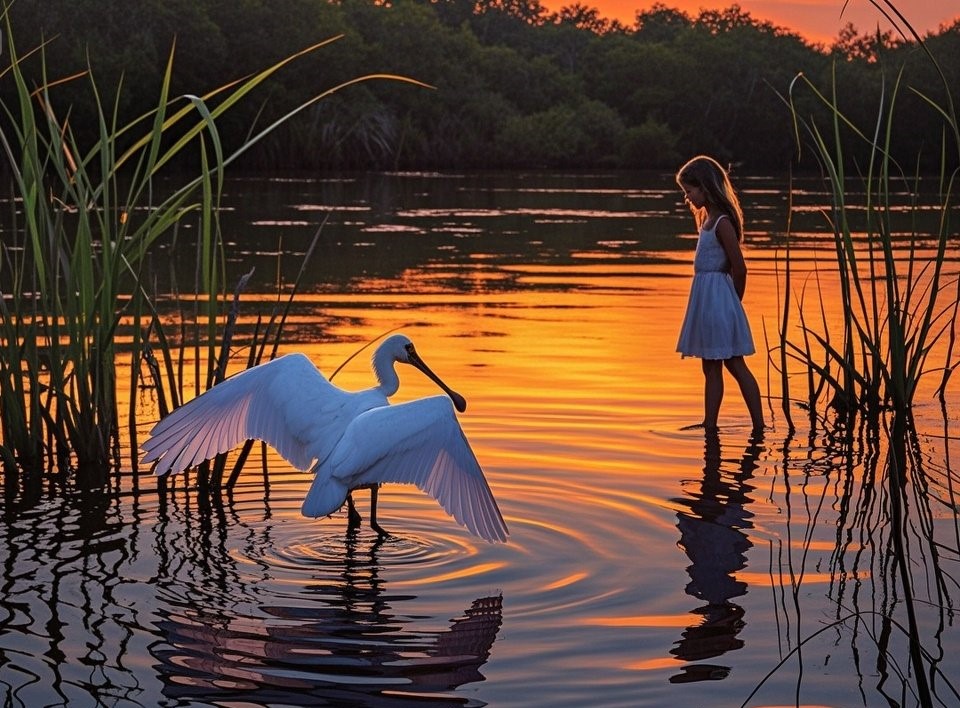
One evening, I stood at the edge of Sanibel’s marsh. The sky was orange, the breeze soft, and the water nearly silent. Suddenly, a spoonbill flew low across the horizon, its wings slicing through the golden light. It didn’t look back. It just flew slowly, like it knew exactly where it was going. In that moment, it felt like I was reading a secret letter from nature.
Spoonbill: Nature’s Muse in Art and Design
Its color and shape have inspired paintings, logos, even interior design. Who would’ve thought a marsh bird could become a design icon? With its slender silhouette and signature fuchsia hue, the spoonbill has sparked creativity in artists and designers alike. You’ll find its motif in tropical wallpapers, eco-tourism illustrations, and even resort fashion palettes.
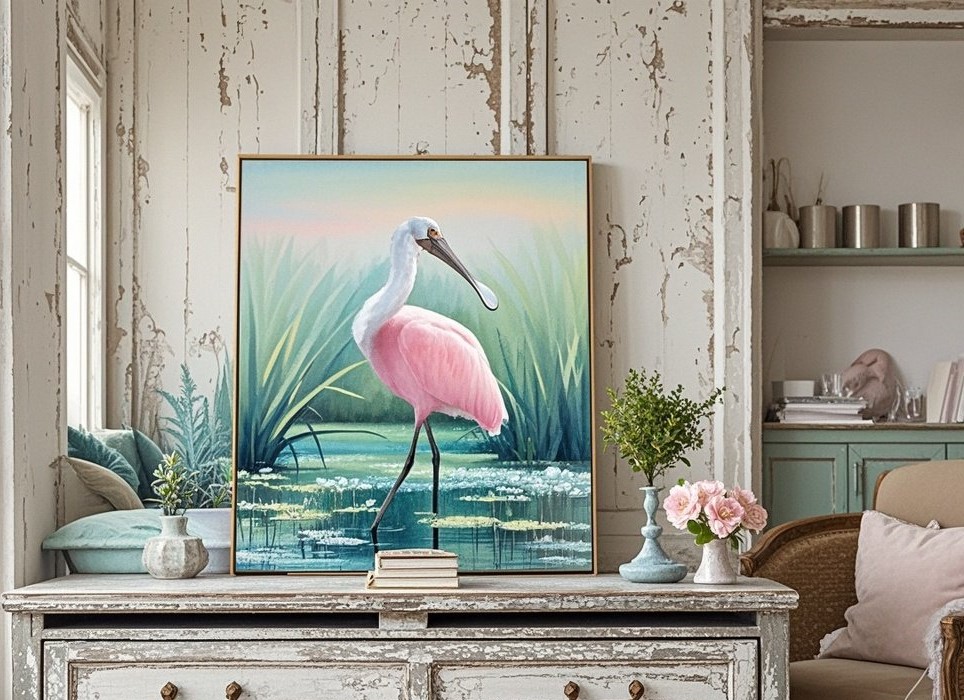
In a small gallery in Sanibel, I once saw a painting of a spoonbill standing among mangroves. The colors weren’t loud, but something in it felt alive. A visitor whispered, “This bird looks like a painting that’s already finished even before it’s painted.”
Spoonbill Color Palette
| Color | Visual Meaning |
| Fuchsia | Energy, exotic, tropical |
| Soft coral | Warmth, friendliness, natural |
| Marsh green | Calm, cool, grounded |
| Pastel blue | Peaceful, morning sky |
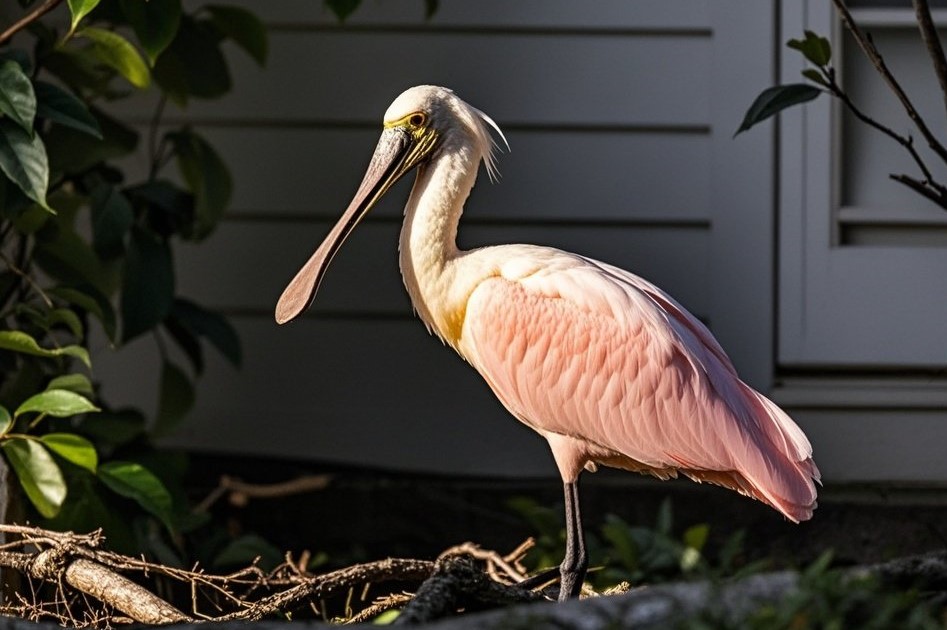
In the morning, the spoonbill stands among the shadows of the mangroves. Sunlight touches its feathers, and the pink turns nearly translucent. An interior designer once said, “If you want your home to feel like a Sanibel morning, take the spoonbill’s colors and add the sound of water.”
Conclusion: Marshes, Color, and Quiet Wonder
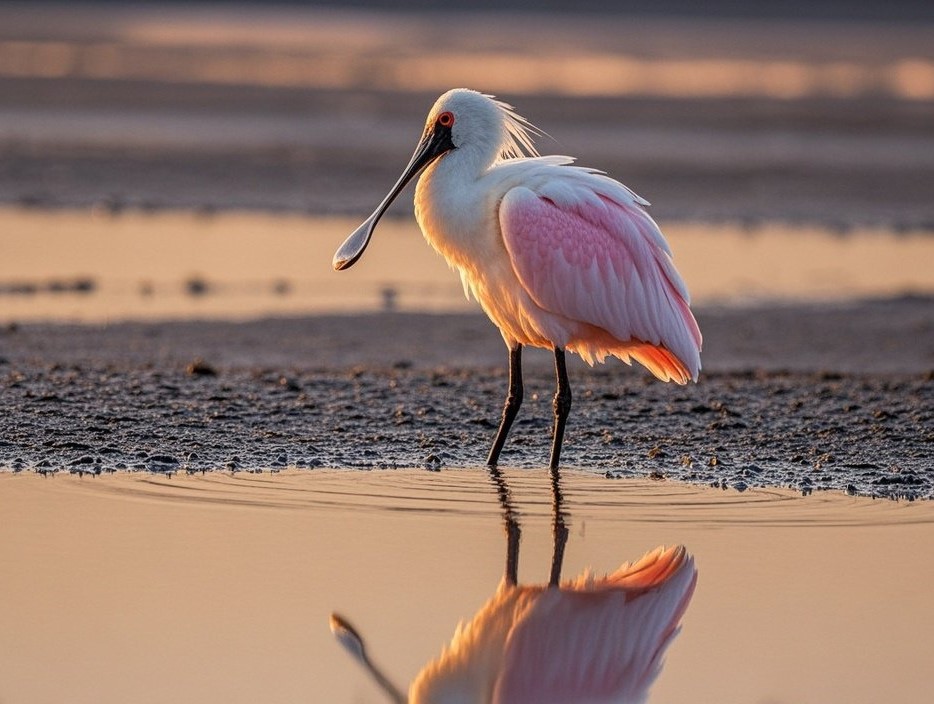
In a fast-moving world, the spoonbill teaches us to slow down. It doesn’t rush. It doesn’t shout. It simply exists with unusual color, graceful movement, and a calming presence. In Sanibel, the spoonbill is more than a bird. It’s a symbol of nature we can still enjoy, if we pause long enough to notice.
Sometimes, wonder doesn’t arrive in grand gestures. It comes as a pink bird sweeping water with its bill, leaving soft footprints in the mud, then vanishing into the golden light of dusk.
Visit Sanibel. Watch the spoonbill dance. Let the marshes remind you how quiet beauty still lives.

I’m Ayla Wolesky, and I’ve spent years exploring every corner of Sanibel Island. From its pristine beaches to the hidden gems only locals know about, I’m passionate about sharing everything this beautiful island has to offer. Whether it’s the best spots for shelling, the wildlife that makes Sanibel so special, or where to enjoy a perfect sunset, I’ve got you covered. My goal is to provide insider tips and up-to-date information that will help you experience Sanibel Island like never before.


